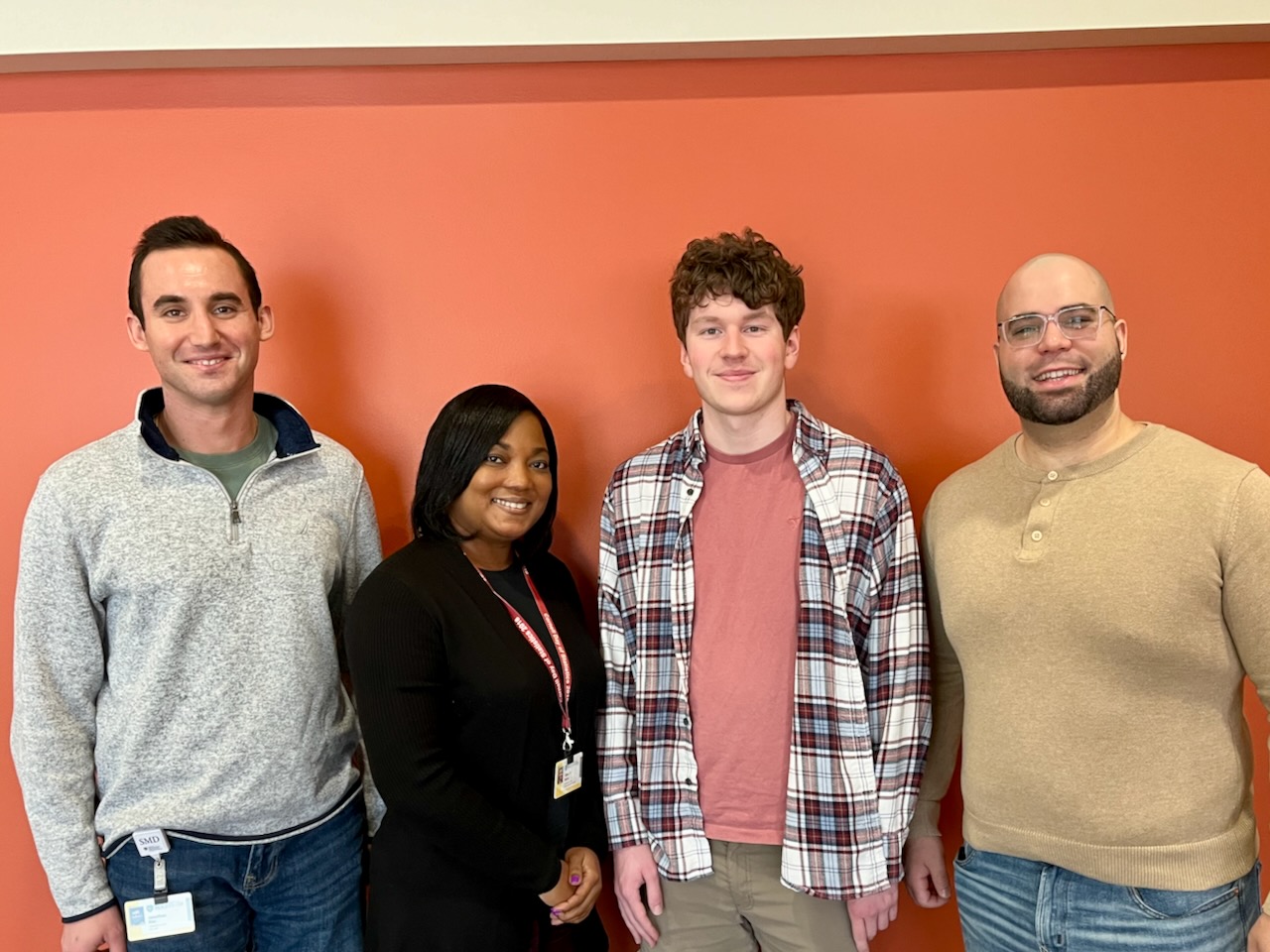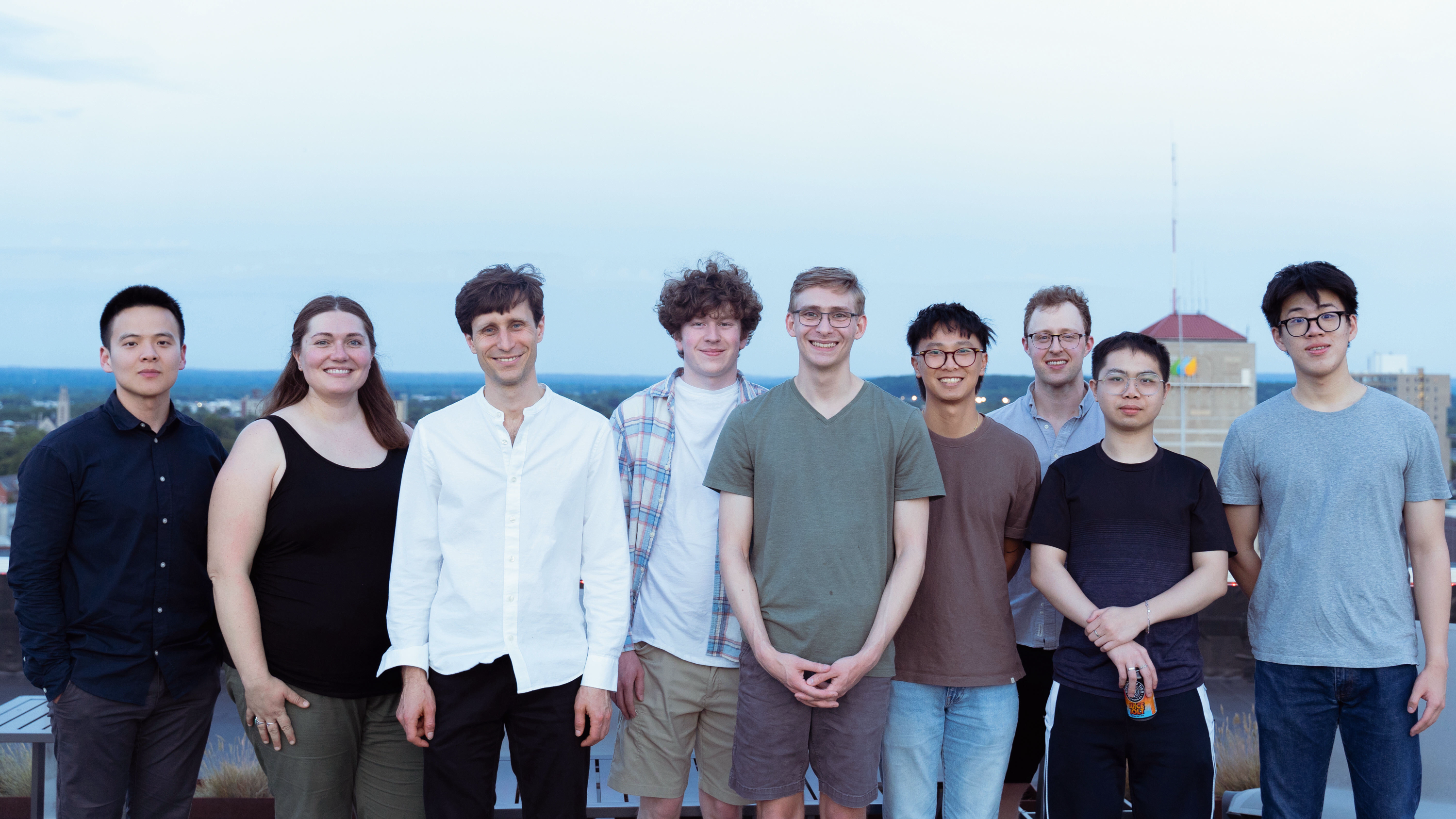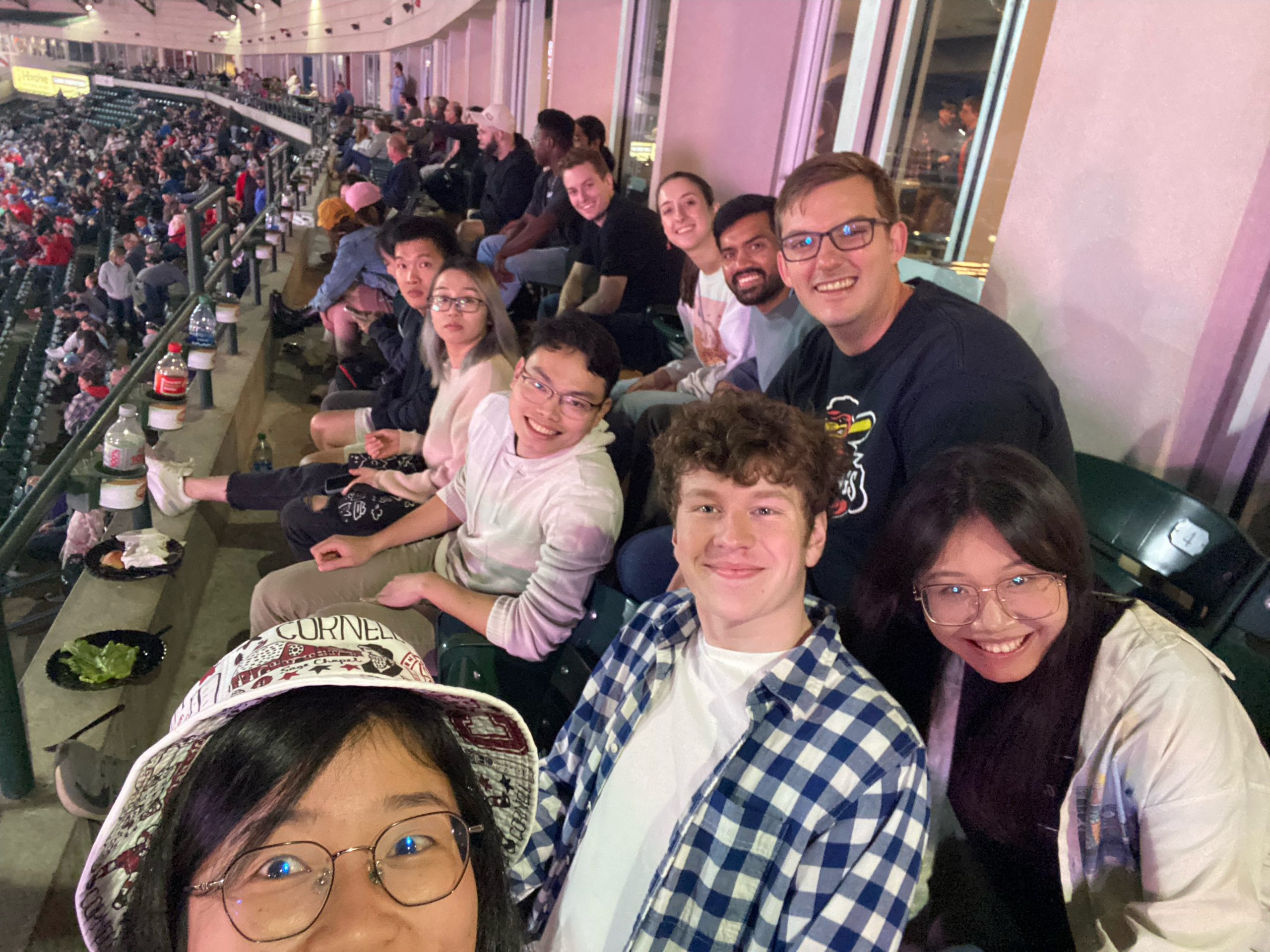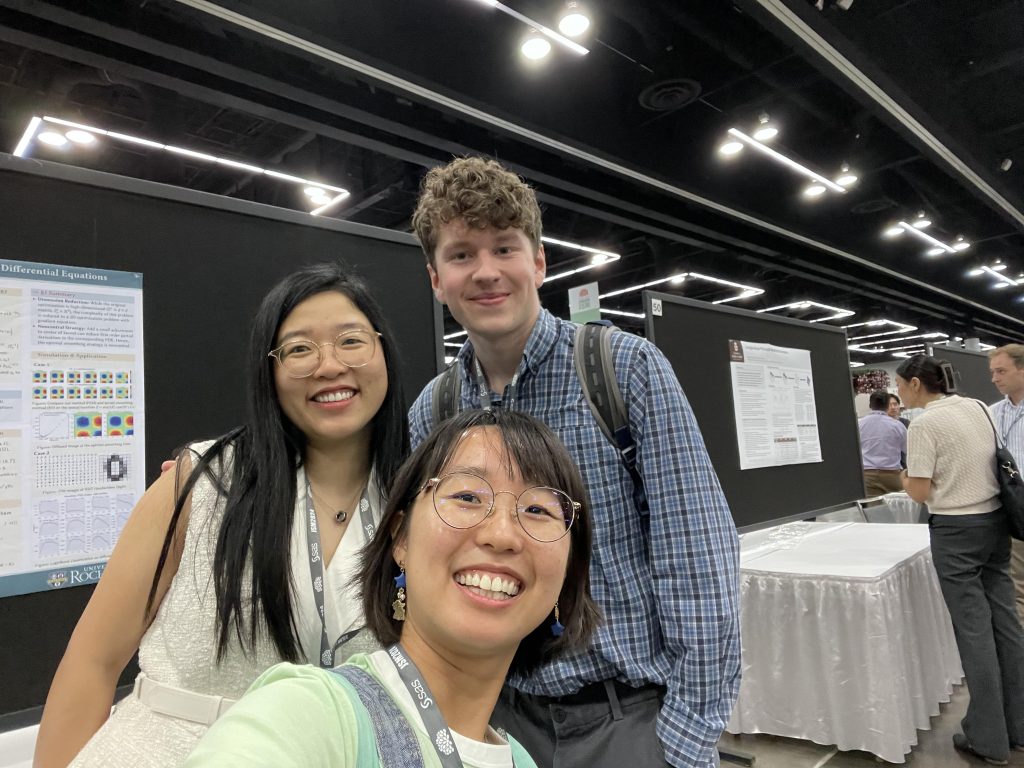
Hi! I'm TJ Weaver, Statistician
Welcome to my personal website. Please have a look around, and feel free to take advantage of the contact page. If you are a potential employer, please have a look at the Professional Page. If you’re interested in reading about my in-progress journey to a PhD, check out the blog.
.
About Me
I am currently a second year student in the University of Rochester Medical Center’s PhD program in Statistics, a part of the department of Biostatistics and Computational Biology. In my spare time I play chess, read novels, watch Star Wars, and learn about anything that interests me. Upon graduation I hope to work as a Statistician in the pharmaceutical industry or in pharmaceutical-adjacent academia.

T32 Environmental Health Biostatistics Training Grant
Myself with the other trainees, from right to left: Jonathan Klus, Claire Nurse, myself, and Ricardo Lopez Candelaria.
This summer I was put on the department’s T32 Environmental Health Training grant. I am currently working with Dr. Sally Thurston as a part of this grant to implement a longitudinal model for the impact of Methyl-Mercury exposure on 6 domains of cognitive functioning, a project which currently is in its earliest stages. The work follows up on two prior papers by Dr. Thurston: Development of a long-term time-weighted exposure metric that accounts for missing data in the Seychelles Child Development Study, and Associations between time-weighted postnatal methylmercury exposure from fish consumption and neurodevelopmental outcomes through 24 years of age in the Seychelles Child Development Study.

Norman-Haignere Computational Neuroscience of Audition Lab
Myself with the other lab members, from left to right: Chris (KCriss) Li, Dana Boebinger, Sam Norman-Haignere, myself, Joseph Jaeger, David Skrill, Aaron Huynh, and Guoyang Liao
This summer I did research with the Computational Neuroscience of Audition lab, where I decomposed the responses of natural stimuli into the outer product of 1-dimensional tensors, as well as comparing two types of signal (with and without a Broadband Gamma envelope) via semi-NMF decomposition into lower dimensional components, as well as using other supervised predictive methods on a dimension-reduced version of both types of signal.

PhD Program in Statistics: Department of Biostatistics and Computational Biology
Me and some of the other PhD students at a Red Wings game: Luke McHan, Cuong Pham, Quiyi Wu, Meherab Hossain, and others.
Thus far, I’ve had a wonderful experience at the University of Rochester while studying for my PhD, the professors are knowledgeable and invested in your success, and have a wide variety of different experiences and areas of research. While the material is challenging, the atmosphere is collaborative and the education is top-notch.

Career Aspirations
Me at JSM with Quiyi Wu (to my left) and Luoying Yang (in front); back left is Quiyi’s poster on image denoising through Kernel Smoothing Finite-Element Method.
It is my belief that the next revolution in global technology is going to come through harnessing our biology, and it’s a revolution that I want to be a part of. With recent advances including gene editing through CRISPR, vaccines that harness RNA, Artificial Intelligence that can predict protein structures from their Amino Acid sequence, and revolutionary new drugs that shrink tumors faster than ever before or can reduce the mortality risk of millions through weight loss, the world is on the precipice of a new era of scientific and medical progress that will lead to people living longer and better lives.
While it’s dubious whether some technological advances have actually made our lives better or worse, it is hard to imagine that making people healthier does anything but improve human flourishing. This is why I hope to work in the pharmaceutical industry, because the main hurdle of getting most revolutionary new treatments to the people who need them most is first ensuring their safety and efficacy through sound statistical methodology. When I graduate, I plan to leverage my education in the pharmaceutical industry in order to improve treatment and maximize learning from the clinical trial process.
That being said, I would be open to any potential career that allows me to solve dynamic and captivating mathematical problems that require pragmatic and creative solutions in a collaborative and collegial environment, and that allows me to make a contribution to a better world, whether that career is in technology, pharmaceuticals, or in academia. In addition to the practical benefits provided by an education in statistics, statistics is an incredibly rich and interesting discipline, which makes it worth studying in and of itself.
